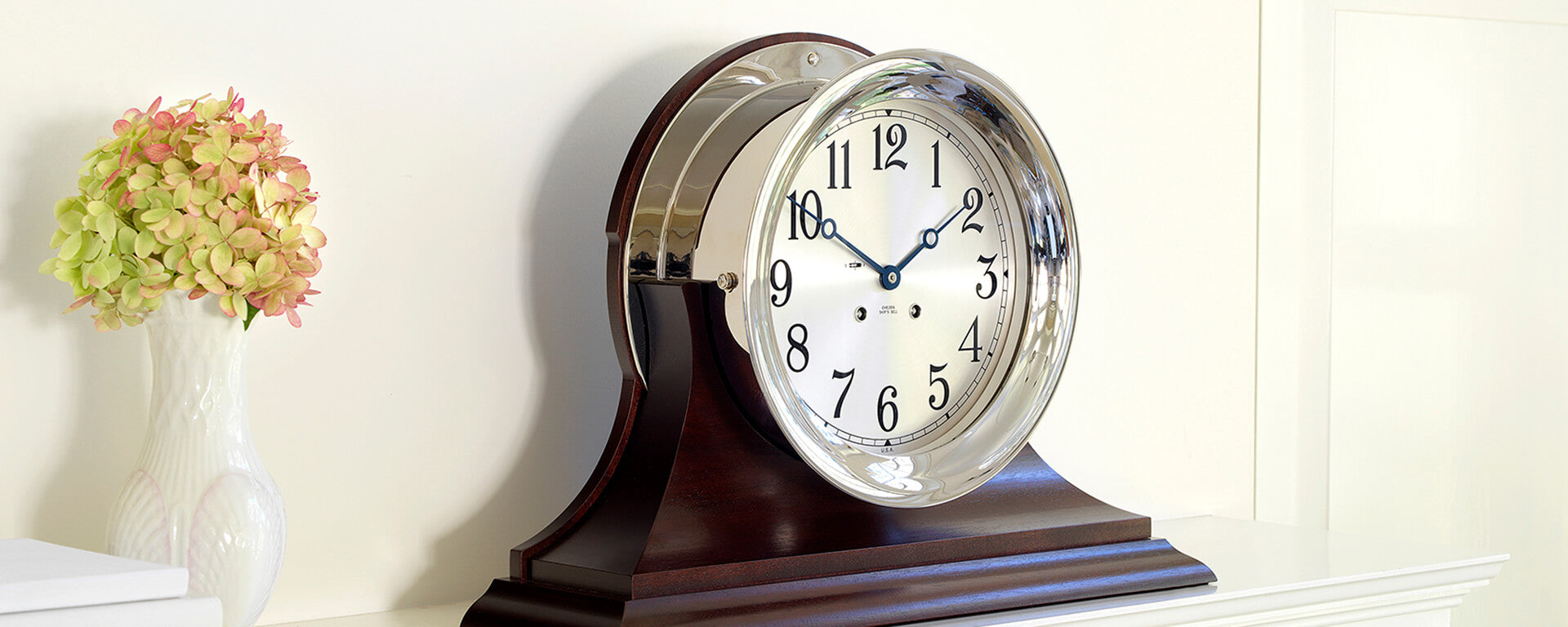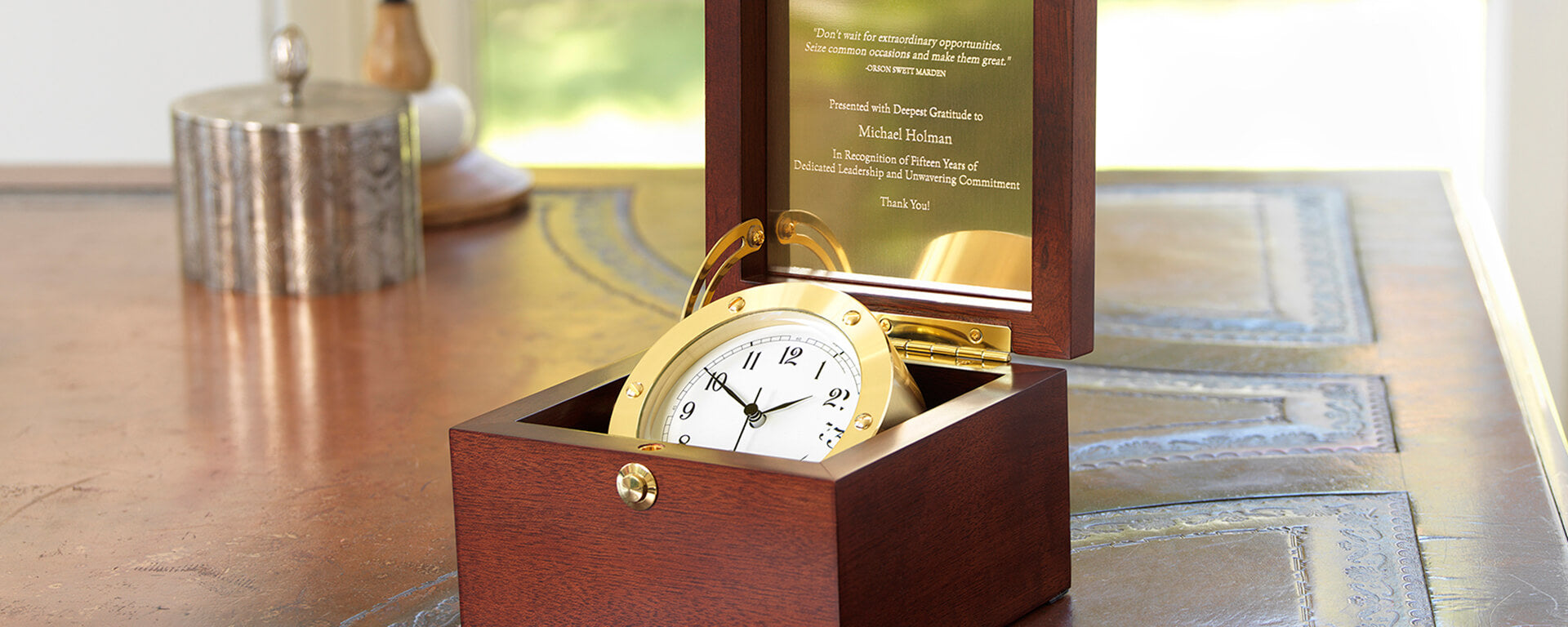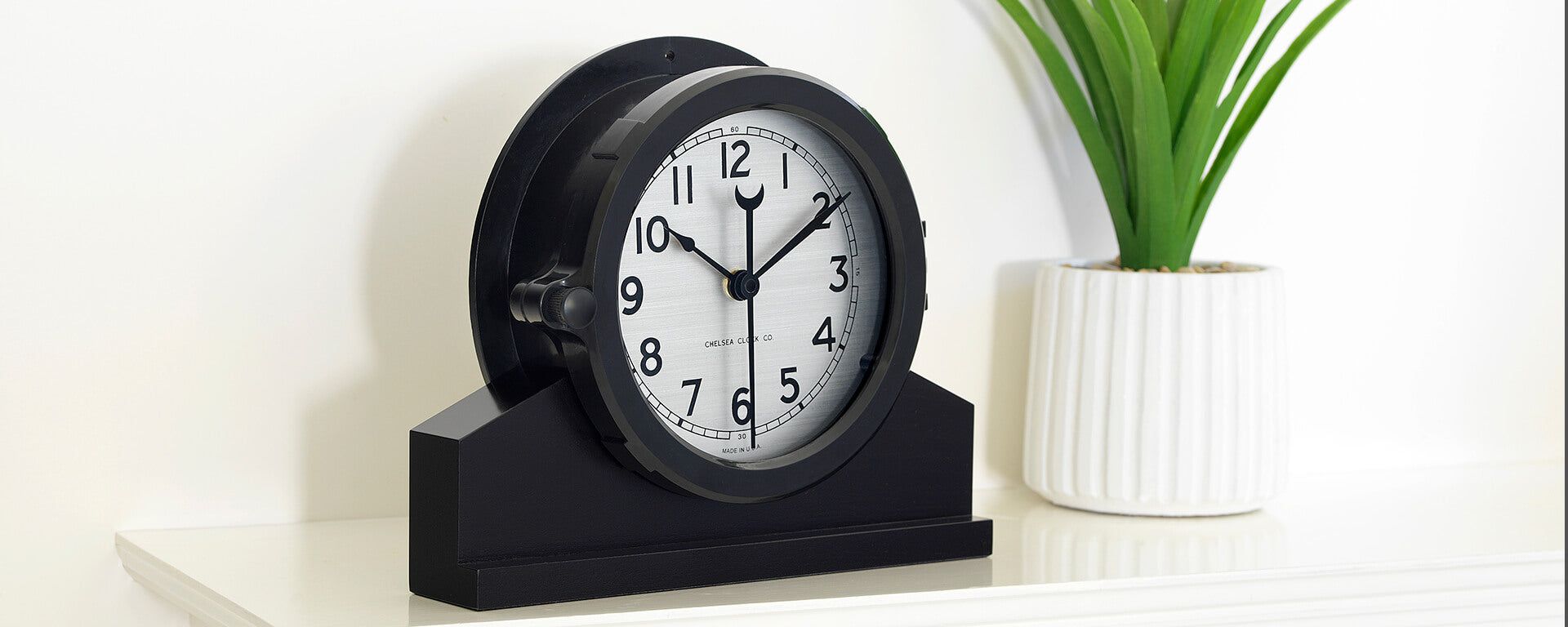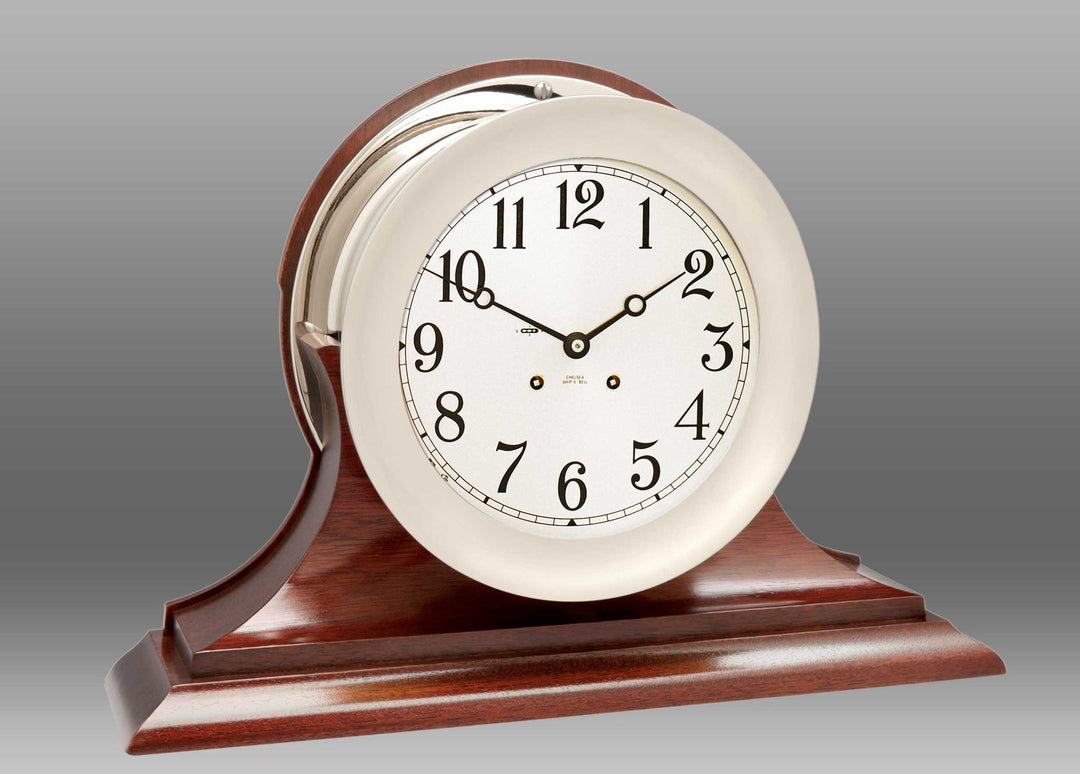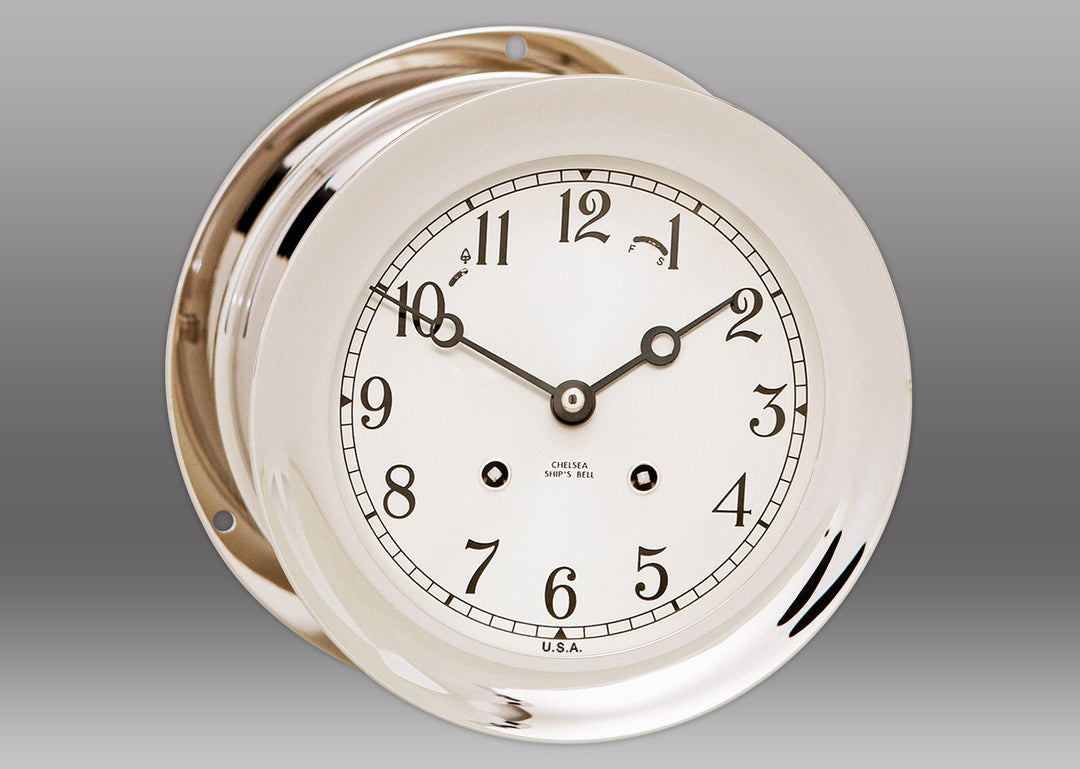Chiming In: Decoding the Ship's Bell Clock Code
Since 1900, Chelsea Clock has been known for the Ship’s Bell timepiece collection. Every Ship's Bell clock is made and assembled by hand at our factory in Chelsea, Massachusetts. It takes up to four weeks to craft each timepiece, They are made with over seven pounds of solid brass and more than 290 precision parts (including gears, pins, plates, and screws) as well as our patented 11-jewel movement. All of our Ship's Bell clocks mark the hours not only by their handsome, hand-silvered dials but by rich, mellow chimes the same way they have since these timepieces were first introduced in 1900.
However, while many of our nautically-inclined customers know ship clock bells inside and out, some are unfamiliar with either the chimes or the meaning behind them. In case you don’t already know about the Ship’s Bell code, here’s a quick lesson. By knowing the sequence your clocks follow, you’ll know why the ship’s bell sound is meaningful — and the strikes may become a part of your life too.
The History of Ship Clock Chimes
Mariners have used a unique bell code to tell time at sea for hundreds of years. The code is based on the crew’s typical workday routine while the vessel is underway. A ship at sea requires constant attention throughout the day’s 24 hours. Therefore, the day is divided into six four-hour periods that are each called a “watch.” Similarly, the crew is broken up into three divisions. Division members stand their individually assigned duties on two watches per day, with eight hours off duty between watches.
First Watch: 8:00 p.m. to 12:00 a.m.
Mid-Watch (also Black Watch): 12:00 a.m. to 4:00 a.m.
Morning Watch: 4:00 a.m. to 8:00 a.m.
Forenoon Watch: 8:00 a.m. to 12:00 p.m.
Afternoon Watch: 12:00 p.m. to 4:00 p.m.
Evening Watch: 4:00 p.m. to 8:00 p.m.
To rotate each division’s watch times, the Evening Watch is periodically divided into two watches. These are called Dog Watches because they “dog” the watch schedule for all divisions ahead by one watch period.
The watch officer struck the ship’s bell every half-hour to apprise the crew of the time. A single bell denoted the end of the first half-hour, and one bell was added each half-hour. Eight bells, therefore, signaled the end of each four-hour watch.
8 bells: 12:00, 4:00, 8:00
1 bell: 12:30, 4:30, 8:30
2 bells: 1:00, 5:00, 9:00
3 bells: 1:30, 5:30, 9:30
4 bells: 2:00, 6:00, 10:00
5 bells: 2:30, 6:30, 10:30
6 bells: 3:00, 7:00, 11:00
7 bells: 3:30, 7:30, 11:30
In the “Age of Sailing”, time was kept using a 30-minute hourglass that was turned with each bell striking. Modern timepieces are now used, but the chime sequence remains the same to this day.
Modern Ship’s Bell Clocks
Chelsea Clock Ship's Bell clocks always have and always will follow this same sailing bell sequence. So, like centuries of seafarers, Chelsea Ship’s Bell clock owners know the time even when they can’t see it — they just have to hear its signature chimes! View our entire collection of Ship's Bell clocks and other handcrafted clocks, barometers, and tide instruments at ChelseaClock.com.



